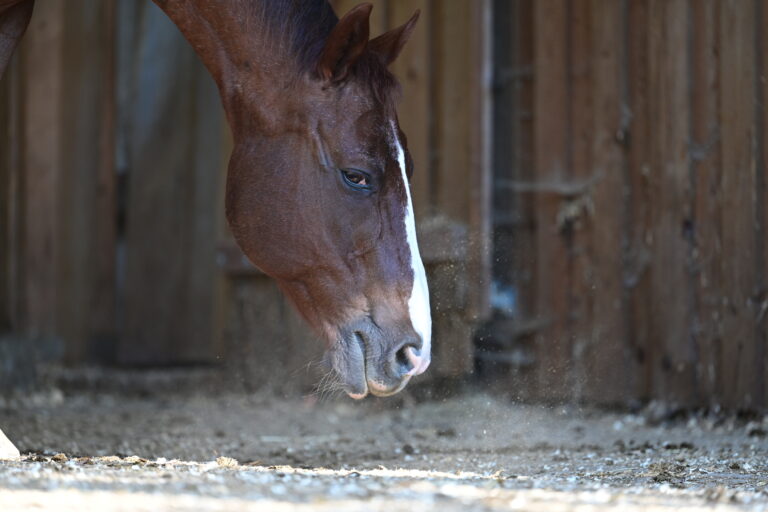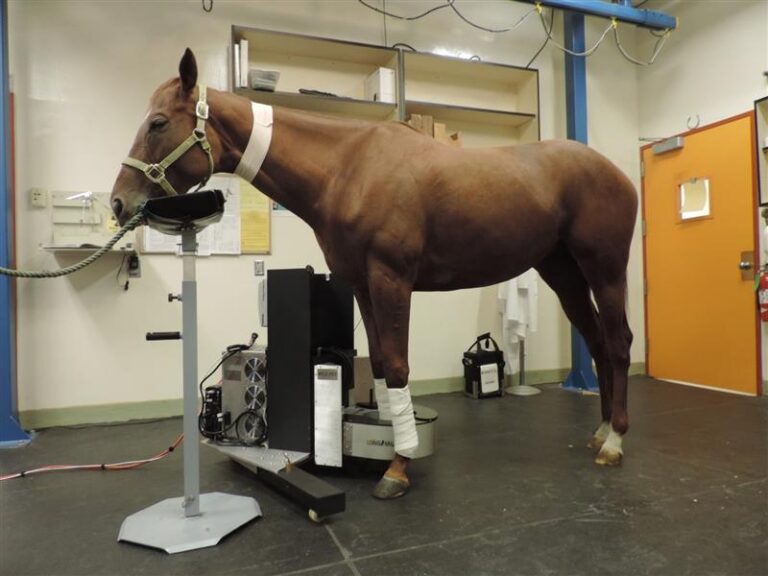
There is contradictory evidence on the potential benefits of tongue ties on upper airway function and their efficacy in inhibiting intermittent dorsal displacement of the soft palate (DDSP) in racehorses. The aim of this prospective, crossover blinded clinical study was to test the hypothesis that tongue ties increase the pharyngeal diameter and decrease the occurrence of dynamic airway obstruction in racehorses.
Researchers analyzed data from 22 Thoroughbred and 8 Standardbred racehorses examined using overground endoscopy under full-intensity exercise on training racetracks with and without fixation of the tongue by use of tongue ties. They ensured equivalent exercise intensity by measuring heart rate (bpm), speed (GPS) and venous lactate. Pharyngeal diameter was expressed as pharyngeal:epiglottis (PE) ratios and laryngeal abduction accordingly as laryngeal:median ratios. Researchers analyzed data using multivariable repeated-measurements ANOVA.
The PE ratio increased significantly from 1.11 ± 0.19 to 1.28 ± 0.30 in all horses between rest and full-intensity exercise (P < 0.01). This effect decreased significantly by the application of tongue ties (1.15 ± 0.27, P < 0.01). Tongue ties did not influence maximum laryngeal width (P = 0.09) and area (P = 0.2) significantly. The study found DDSP in 4/30 examinations with tongue tie and in 1/30 examinations without tongue tie.
Bottom Line: There was no positive effect of tongue ties on pharyngeal or laryngeal diameters. Therefore, the results of this study do not support the use of tongue ties to enhance upper airway function.
https://beva.onlinelibrary.wiley.com/doi/full/10.1111/evj.13867







